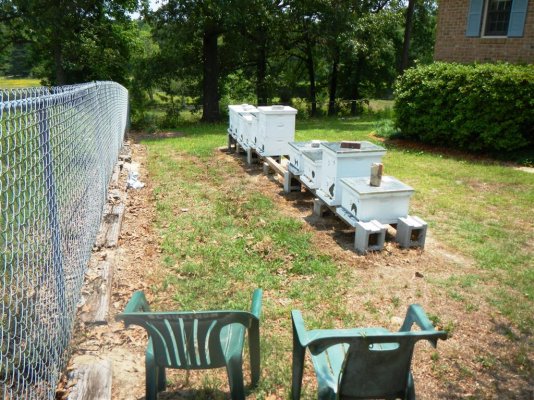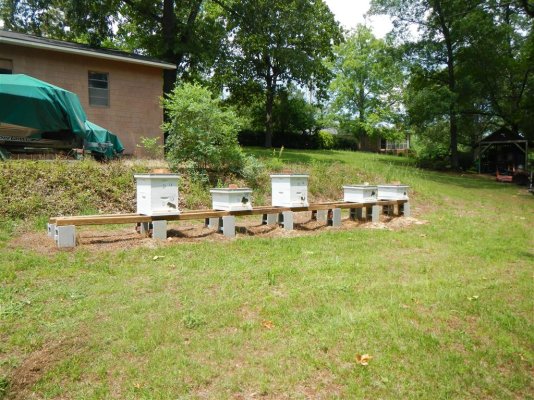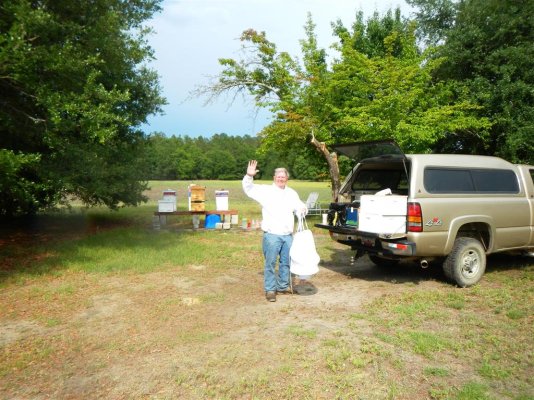brewer12345
Give me a museum and I'll fill it. (Picasso) Give me a forum ...
- Joined
- Mar 6, 2003
- Messages
- 18,085
Installed 3 new packages of Italian bees this morning. They got progressively more irascible as I installed each package in a hive and by the third time one finally exploited a chink in my armor and stung me on the nape of the neck. They are calming down, but still pretty bitchy. All should be well by later today or tomorrow. I have room for a fourth hive at the house and I am going to see if I can catch a swarm this spring to fill that spot.



